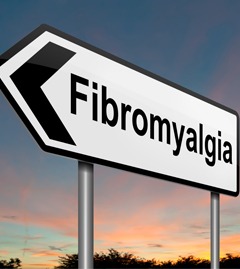
Fibromyalgia is a pain disorder characterized by chronic widespread musculoskeletal pain. It’s different from other pain disorders in that the symptoms are not restricted to pain; they are accompanied by fatigue, sleep, memory and mood issues. Researchers believe that fibromyalgia amplifies painful sensations caused by a stimulus which normally doesn’t provoke pain. This phenomenon is called allodynia and is common amongst Fibromyalgia patients.
Women are more likely to develop fibromyalgia than men. Fibromyalgia affects 3.4% of women and 0.5% of men in the United States. Patients who have fibromyalgia also commonly have tension headaches, temporomandibular joint (TMJ) disorders, irritable bowel syndrome, anxiety and depression.
Symptoms:
The pain associated with Fibromyalgia is often described as a constant dull ache, typically arising from muscles. To be considered widespread, the pain must occur on both sides of the patient’s body and above and below your waist. Patient suffering from fibromyalgia suffer also from fatigue, sleep, memory and mood issues.
Treatment
There are many approaches to treating fibromyalgia and every treatment is customized to better fit every patient and their symptoms.
– Physical Therapy
– Medication Management Therapy
– Anti-depression medications: Amitriptyline (Elavil), Nortriptyline (Pamelor)
– Anti-seizure medications: Gabapentin (Neurontin), Pregabalin (Lyrica)
– We are proud to offer the BREAKTHROUGH IV Ketamine Treatment Therapy. This is a revolutionary way to treat Fibromyalgia and has excellent results.
Use of ketamine showed a significant reduction in pain intensity during and after the test period in fibromyalgia patients. Tenderness at tender points decreased and endurance increased significantly.
A recent patient success story:
Karen Mullins was diagnosed with Fibromyalgia after a car accident left her in severe chronic pain. Karen was one of the first patients in Dr. Hanna’s clinical study for Fibromyalgia pain utilizing IV Ketamine Infusion Therapy. Her results are extremely positive and she now has a much better quality of life.
Fibromyalgia Causes:
Well, Doctors and researchers still don’t know what causes Fibromyalgia. However, symptoms sometimes begin after trauma, surgery, infection or significant psychological stress. In other cases, symptoms gradually accumulate over time with no triggering event.
Other theories include:
- Genetics. Fibromyalgia tends to run in families, this means you may be more susceptible to developing the disorder if a family member has it. It doesn’t necessarily mean you will pass on the disorder for certain.
- Infections. Some illnesses appear to trigger or aggravate fibromyalgia.
- Physical or emotional trauma. Post-traumatic stress disorder has been strongly linked to fibromyalgia.
Who is more likely to develop Fibromyalgia?
- People with an underlying malignancy
- People with endocrine diseases such as diabetes or hyperthyroidism
- People with hyper mobility syndromes
- People with autoimmune diseases such as lupus
- People with neurological diseases such as multiple sclerosis
Screening and Diagnosis:
Fibromyalgia was once diagnosed based on the tender points previously mentioned. A person who complained of 11 out of the 18 tender points was thought to qualify for the diagnosis
After further studying Fibromyalgia, researchers concluded that a patient satisfies diagnostic criteria for fibromyalgia if the following 3 conditions are met:
1) Widespread Pain Index (WPI) ≥ 7 & Symptom Severity (SS) scale score ≥5
OR WPI of 3-6 and SS scale score of ≥9.
Widespread Pain Index (WPI) Note the number areas in which the patient has had pain over the last week. In how many areas has the patient had pain? Score will be between 0 and 19.
| Symptom Severity (SS) scale Fatigue Waking unrefreshed Cognitive symptoms For the each of the 3 symptoms above, indicate the level of severity over the past week using the following scale:
Considering somatic symptoms in general, indicate whether the patient has:
|
2) Widespread pain must be present for at least 3 months
3) The patient doesn’t have a disorder that would otherwise explain the pain.
We provide a comprehensive in-office patient assessment for the diagnosis of fibromyalgia. This is a sample of the questionnaire and criteria survey. (links of the pdf files to be added here)
Fatigue and sleep disturbances
People with fibromyalgia often complain of feeling unrested, despite getting adequate sleep. Sleep is frequently interrupted by pain, and other sleep disorders, such as restless legs syndrome (RLS) and sleep apnea.
Co-existing conditions:
Many people who have fibromyalgia also commonly have:
- Chronic fatigue
- Anxiety
- Depression
- Endometriosis
- Headaches (Tension & Migraine)
- Irritable bowel syndrome (IBS)
- Temporomandibular disorder
- Restless Leg Syndrome (RLS)
- Chemical sensitivity
- Skin rashes
